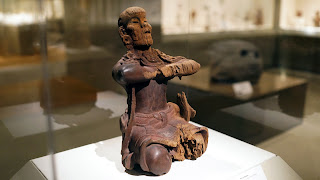Greek Architectural Orders
https://smarthistory.org/greek-architectural-orders/
An Architectural Order describes a style of building. The most classical Greek Architectural Orders are; Doric, Ionic, and Corinthian.

The Doric Order is one of the earliest forms of pillar to date. "The Doric order emerged on the Greek mainland during the course of the late seventh century B.C.E. and remained the predominant order for Greek temple construction through the early fifth century B.C.E., although notable buildings of the Classical period—especially the canonical Parthenon in Athens—still employ it."
The Ionic Order, while emerging around the same time, was built slightly different with the base supporting the column unlike the Doric Order. "The monumental temple dedicated to Hera on the island of Samos, built by the architect Rhoikos, c. 570-560 B.C.E., was the first of the great Ionic buildings, although it was destroyed by earthquake in short order. The sixth century B.C.E. Temple of Artemis at Ephesus, a wonder of the ancient world, was also an Ionic design. In Athens the Ionic order influences some elements of the Parthenon (447-432 B.C.E.)"
It is said that although the Doric and Ionic Orders are similar, there is a noticable difference. "The Ionic order is notable for its graceful proportions, giving a more slender and elegant profile than the Doric order. The ancient Roman architect Vitruvius compared the Doric module to a sturdy, male body, while the Ionic was possessed of more graceful, feminine proportions. The Ionic order incorporates a running frieze of continuous sculptural relief, as opposed to the Doric frieze composed of triglyphs and metopes."
Finally the Corinthian Order is the newest, most recent of the classical orders. The Corinthian Order was extremely detailed and paid homage to plants that grew around the capitol. "The defining element of the Corinthian order is its elaborate, carved capital, which incorporates even more vegetal elements than the Ionic order does. The stylized, carved leaves of an acanthus plant grow around the capital, generally terminating just below the abacus."

These classical architectural orders were some of the earliest demonstrations of architecture and even now they influence some of the most modern types of architecture in the world.


Hey Jeremy! I found your blog very informative and well cited to the readings for this week. The Dorian order is very beautiful and definitely demonstrates how ancient architecture influences the modern world and what we believe is beautiful. Good post!
ReplyDeleteHey Jeremy! I loved the picture you posted in regards to architecture! It was very informative and now I know every little detail of a column. The Dorian is a beautiful piece of architecture. Thank you for sharing!
ReplyDeleteInteresting topic, I never would have thought to look at the pillars themselves as art pieces! I did not know that there were multiple types of pillars, let alone that each of them were different from the last. The Corinthian Order seems like it would be such a pain to add all the details onto an already large piece of rock.
ReplyDeleteJeremy, I did my blog post on Greek Architecture as well! I found all of it very interesting and crazy how much thought goes into it. I found all of the different orders very well thought out because the little ledge added or a different design of a column influenced the rest of the worlds architecture!
ReplyDelete